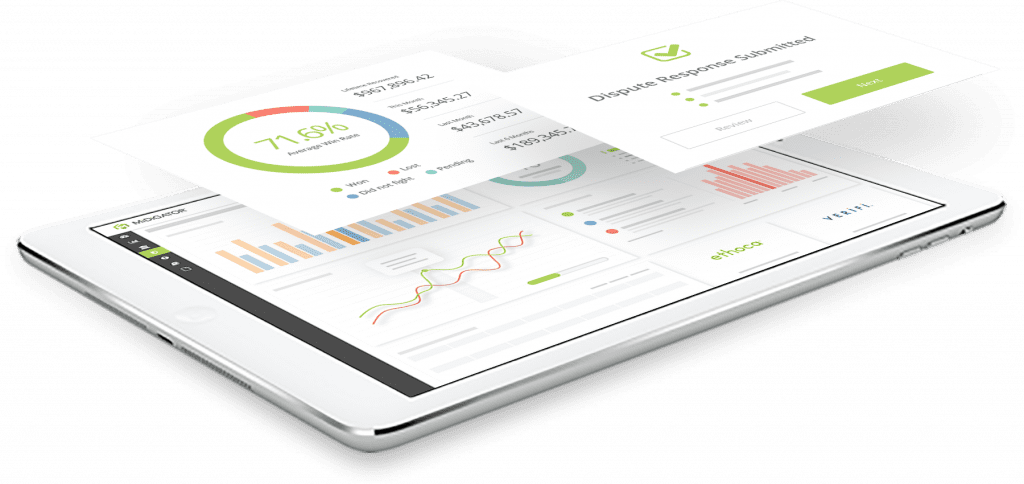30 Telltale Signs of Fraud: How to Recognize High-Risk Orders
- September 25, 2019
- 7 minutes
For nearly all businesses, fraud is a common concern. However, not everyone faces the same types of risks. Criminals vary their tactics and evolve their methods over time.
If you want to protect your business, you need to be just as agile and inventive with your prevention strategies.
The Most Common Signs of Fraud
There are 30 warning signs of fraud that you should be aware of and ready to stop. Individually, these activities might not be cause for concern. But if you see multiple red flags on a single order, proceed with caution.
You can check all the warning signs below or choose the category you are most interested in:
Signs of Fraud During an Internet Order
1. Shopping for the First Time
Obviously, you need to have a steady stream of fresh shoppers if you want to grow your business. But new customers could bring new risks — especially if a first-time shopper has other high-risk characteristics.
2. Buying High-Priced Merchandise
Big-ticket merchandise could attract fraudsters for a couple different reasons. Fraudsters might be treating themselves to all the expensive goodies they’d never buy with their own money. Or, they may be stocking up on merchandise that has maximum resale potential.
3. Placing Larger-Than-Normal Orders
Any order that is more than your average ticket price should be considered suspicious. Fraudsters can afford to be excessive when they are spending someone else’s money.
4. Buying Multiples of the Same Thing
Fraudsters might try to set up their own version of your business on the black market. To do that, they’ll need an inventory of merchandise in different colors, sizes, styles, etc.
5. Using the Same Shipping Address for Different Orders
Fraudsters often access an entire list of stolen account information. They’ll likely place as many orders as possible before the fraud is detected.
6. Making Several Purchases with the Same Card but Shipping to Different Addresses
Some fraudsters like to share with their family and friends. This tactic is especially common during the holidays when legitimate shoppers are sending gifts to other people.
7. Using Several Cards to Complete a Single Order
When fraudsters gain access to multiple accounts, they want to check which ones are still available. This is called testing or running a card. A fraudster might use a couple different cards to complete a single transaction, testing several cards at one time.
8. Re-Trying With a Smaller Amount After the First Attempt is Denied
A fraudster probably doesn’t know how much available credit there is on a card (or available funds on a debit card). If the first attempt is denied, it could mean that the transaction amount exceeded the limit. The fraudster will likely try again with a lesser amount.
9. Choosing Rushed or Express Shipping
The key to benefiting from stolen account information is ensuring the merchandise ships before the fraud is detected. Since the fraudster isn’t paying the bill, the extra expense isn’t a concern.
10. Shipping to a Freight Forwarding Service
A freight forwarder is a company that receives shipments and forwards them on to their final destination. A fraudster might use this service to route stolen goods to an international address.
11. Shopping From an IP Address that Doesn’t Match the Shipping or Billing Location
An IP address helps identify two different things: the device used to make the purchase and the geographical region where the internet was accessed. If neither the shipping or billing address is in the same region as the IP address, it could be a sign of fraud.
12. Using Obviously Fake Information
Fraudsters might not know the cardholders’ real contact information, and they probably don’t want to give you their own personal information. That leaves fake information. Be on the lookout for obviously fictitious entries, like 222-333-4444 or asdfjkl@freemail.com.
13. Using an Email Address That Doesn’t Align With the Shopper’s Name
Again, fraudsters rarely use legitimate information, so look for strange inconsistencies. For example, if the customer’s name is Jane Doe, it wouldn’t be natural to have an email like Steve.Smith@email.com
14. Placing Orders That Differ From a Regular Shopper’s Norm
The orders for your loyal, repeat shoppers likely have some common characteristics — like a pound of dog food on the first Monday of the month. Any time you see a regular shopper making irregular purchases, it might be a sign of fraud.
15. Seeing Multiple Purchases From the Same BIN
The BIN (bank identification number) is the first six digits of the cardholder’s account number and identifies the bank that issued the card. Several transactions from the same BIN could mean the bank was hacked and account information was stolen in bulk.
16. Receiving an Approval After Several Declines
Fraudsters will often keep trying to place a fraudulent order, even if the first attempts are declined. The fraudster will likely try different combinations of information until the right credentials are found.
17. Struggling to Provide Personal Information
Genuine shoppers will be able to quickly and accurately provide personal information. Fraudster might mispronounce names or pause to consider their options before answering.
Something to Consider
It’s essential to protect your business from criminal fraud. Fortunately, there are several excellent tools on the market today that can help keep risk to a minimum.
But it is important to note that criminal fraud isn’t the only threat your business is exposed to. There is another type of fraud that is even worse — friendly fraud.
Research has found that 71% of all chargebacks were categorized as criminal fraud. However, 77% of those “fraud” claims were actually friendly fraud.
The warning signs for criminal fraud aren’t the same as the red flags for friendly fraud. In fact, friendly fraud has very few detectable signals. You’ll need two entirely separate management strategies, one for criminal fraud and one for friendly fraud.
If you’d like help managing friendly fraud, contact Midigator® today. We can help you create a comprehensive strategy to prevent, fight, and analyze all potential risks.
Signs of Fraud During a Telephone Order
18. Showing Little Interest in Policies or Special Offers
If the caller isn’t worried about the details of your return policy, rebates, or warranties, it could be a sign of fraud.
19. Focusing Intently on Shipping Details
Fraudsters want their stolen goods to be shipped before the scam is detected. They will likely be very interested in how quickly the order will be fulfilled and shipped.
20. Using Telephone Relay Services
Telephone relay services help individuals who are deaf, are hard of hearing, or have speech impairments. This service transmits typed messages instead of voice. A fraudster might use this service to mask inconsistencies that would otherwise be suspicious — like a man using a woman’s card.
Signs of Fraud During an In-Person Transaction
21. Shopping Without Regard to Details
A fraudster might not show attention to details while shopping. For example, the purchase might include clothing for different styles, sizes, and genders.
22. Buying High-Dollar Merchandise Without Asking Questions
Even the most well-researched, decisive shopper will have a few questions while making a major purchase. If a customer doesn’t seem worried about things like quality, compatibility, or price, it could be an indicator of fraud.
23. Checking Out in a Hurry
A fraudster might try to hurry the checkout process or ask a lot of questions to distract the cashier while paying.
24. Coming Back to Buy More
If the first purchase went ok, the fraudster might return to try another.
25. Arriving Right When the Store Opens or Right Before the Store Closes
Shopping as soon as possible in the morning could mean the fraudster acts before the cardholder is even awake and aware of a problem. Buying at the end of the day could hide any suspicious behavior in the flurry of closing-time activity.
26. Taking the Card From a Pocket Instead of a Wallet
The fraudster might be worried about mixing up personal cards with the stolen card. It might be kept separately, like in a pocket.
27. Signing Extra Slowly or Extra Sloppy
Both a slow, deliberate signature and a hurried, illegible one could be signs of fraud. Either the fraudster is meticulously trying to replicate someone else’s mark or trying to brush off any discrepancies by being rushed. If the shopper first turns the card over and checks the signature, that’s a dead giveaway!
28. Looking up the PIN
If a shopper has to consult a piece of paper, a note stored in a phone, or a reminder written on the palm of a hand, it could be an indicator of fraud.
29. Appearing Nervous or Agitated
People who are doing something they know they shouldn’t will often have physical indications of their guilt and unease.
30. Using a Card that Has Been Altered or is Different From the Norm
There are several card characteristics that, if altered, indicate fraud. For example:
- A card that is not the same size, weight, or style of a typical card
- A card that appears to have been re-embossed
- A card with a damaged hologram
- A card that is missing either the magnetic stripe or chip
- A card with an altered signature panel
Need Help Managing Fraud and Chargebacks?
There are several different indicators of fraud, and monitoring each and every one is challenging. If you’re manually reviewing your orders and struggling with the labor-intensive task, there might be a fraud detection tool that can automate some of your efforts.
If you suspect friendly fraud is to blame, and not criminal fraud, use Midigator to fight back. Schedule a meeting with our team today to discuss your business’s unique challenges and how Midigator can help.













